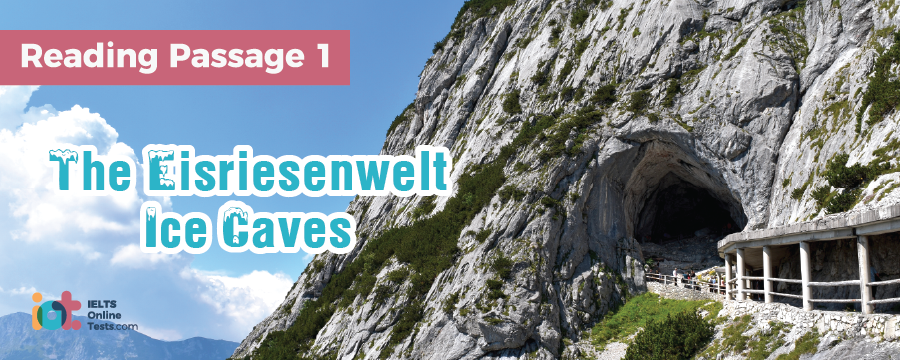
IELTS Mock Test 2021 March
- Đăng ngày: 24 Mar 2021
- Tests taken: 802,672
Đáp án
Part 1: Question 1 - 13
- 1 pure water
- 2 lifting
- 3 cave systems
- 4 A
- 5 D
- 6 C
- 7 B
- 8 G
- 9 E
- 10 A
- 11 D
- 12 B
- 13 B
- 1 pure water
- 2 lifting
- 3 cave systems
- 4 A
- 5 D
- 6 C
- 7 B
- 8 G
- 9 E
- 10 A
- 11 D
- 12 B
- 13 B
Part 2: Question 14 - 26
- 14 A
- 15 D
- 16 A
- 17 C
- 18 D
- 19 C
- 20 B
- 21 D
- 22 C
- 23 C
- 24 NO
- 25 YES
- 26 NOT GIVEN
- 14 A
- 15 D
- 16 A
- 17 C
- 18 D
- 19 C
- 20 B
- 21 D
- 22 C
- 23 C
- 24 NO
- 25 YES
- 26 NOT GIVEN
Part 3: Question 27 - 40
- 27 online/over the internet
- 28 I Agree box
- 29 terms and conditions
- 30 truly and honestly
- 31 40 minutes
- 32 each screen
- 33 Review
- 34 reference
- 35 prompted
- 36 transaction reference number
- 37 C
- 38 D
- 39 40 A,D
- 27 online/over the internet
- 28 I Agree box
- 29 terms and conditions
- 30 truly and honestly
- 31 40 minutes
- 32 each screen
- 33 Review
- 34 reference
- 35 prompted
- 36 transaction reference number
- 37 C
- 38 D
- 39 40 A,D
Leaderboard:
| # | Thành viên | Điểm | Thời gian | |
|---|---|---|---|---|
| idah mamman |  | 9.0 | 15:14 | |
| Sang Nguyen Trung |  | 9.0 | 15:26 | |
| Lusia Baba |  | 9.0 | 15:36 | |
| 4 | olgaabramova2006 |  | 9.0 | 16:03 |
| 5 | Kiệt Trần |  | 9.0 | 16:17 |
| 6 | Ngô Mai |  | 9.0 | 17:20 |
| 7 | Natkadate Taweeratchapaisant |  | 9.0 | 19:36 |
| 8 | azeem khawar |  | 9.0 | 19:50 |
| 9 | Nicholas Shangkala |  | 9.0 | 20:04 |
| 10 | marian magdy |  | 9.0 | 20:13 |
Tips for improving your ielts score

How to avoid “silly” mistakes with telephone numbers in Part 1 IELTS listening
The focus of this lesson is on avoiding “silly” mistakes in part 1 listening.
Giải thích chi tiết
Questions 1-3
Write NO MORE THAN THREE WORDS from the passage for each answer.
The majority of caves around the world are found in coastal areas and were formed as a result of what substance acting on rock?
1
What process is responsible for the creation of the large mountainous ridge which stretches across much of Europe, more commonly known as the Alps?
2
What large areas were enabled to form by the limestone rock present in parts of the Alps?
3
- 1 Answer: pure water
- 2 Answer: lifting
- 3 Answer: cave systems
Questions 4-9
Reading Passage 1 has seven sections, A-G.
Which section contains the following information?
Write the correct letter, A-G. Some letters may be used more than once; others not at all.
4 How rare ice caves and ice-cave systems are
5 How serious weathering of limestone rock in the Alps was responsible for the formation of other features besides caves
6 An explanation of why limestone was eroded more quickly in the distant past than it is being today
7 How the mountain range which is home to the Eisriesenwelt caves was formed
8 How caves with more than one entrance from which air can escape all year round can always remain cold enough in parts for ice to be present
9 How rock corrosion and water erosion do not necessarily have to play a direct role in the formation of ice caves
- 4 Answer: A
- 5 Answer: D
- 6 Answer: C
- 7 Answer: B
- 8 Answer: G
- 9 Answer: E
Questions 10-13
Choose the correct letter, A, B, C or D.
Which of the following statements is accurate?
- A
- B
- C
- D
READING PASSAGE 1
You should spend about 20 minutes on Questions 1-13, which are based on Reading Passage 1 below.

The Eisriesenwelt Ice Caves
A: Most caves are found in coastal regions, their existence being down to pure water erosion. Other common cave formations include those caused by lifting and volcanic lava streams. Eisriesenwelt, which holds the longest known system of ice caves in the world, was not formed by any one of these processes alone, and, in fact, owes its existence primarily to the water-soluble nature of the limestone rock found in the limestone mountains of the Austrian Alps around Salzburg.
B: The Alps themselves, one of the largest mountainous regions on earth, which stretch across most of Austria, Germany, Switzerland and on into Italy and France as well, were created by a process called lifting. The African and European tectonic plates moved towards each other. The impact of the eventual collision of the plates resulted in the formation of a large mountainous ridge stretching across the impact line. As the two plates continued to push towards each other, the ridge grew in size, eventually leading to the formation of cracks, rock displacements and fault lines. Once the Alps were raised, the hollow areas formed by pressure cracks started to be worked on by outside influences, especially water, and these influences then played their part over millions of years in the creation of the subterranean passages of Eisriesenwelt that we are familiar with today.
C: Rock composition also played an important role in the formation of the alpine caves. Extensive cave systems like Eisriesenwelt tend only to be located in the limestone Alps, primarily on account of limestone being water soluble, especially when it comes into contact with rain water that has been enriched with organic material. Over time, the limestone which came into contact with rain water broke down and dissolved, leaving large hollow areas to form underground. When the caves were first forming a few million years ago, the climate of the region was sub-tropical, meaning the level of solubility was even higher than it is today, so the erosion of the limestone occurred at a higher rate, too.
D: Corrosion is the chemical dissolution of rock. In the case of Eisriesenwelt, when rain water came into contact with the limestone rock, lime, or CaC03, was being corroded.
But water alone is not enough to corrode rock. Pure water has fewer H+ ions and would not cause lime to dissolve. Only when carbon dioxide or C02 from the air and vegetation is introduced is an aggressive acid, known as carbonic acid, formed. When this acid permeates the cracks in the limestone, the limestone dissolves. As it dissolves, wider cracks open in the stone allowing more water to pass through, which, in turn, causes greater erosion of the rock. High levels of precipitation, characteristic of the alpine region, resulted in greater volumes of water collecting and flowing through the hollow areas of the stone, and at faster rates. The greater volume of water and rate of flow combined eroded the caves further and led to an increasing amount of material being washed away. This resulted in the formation of the spectacular geological features of the Alps, such as the long gorges, shafts and canyons to be found there.
E: In short, the Eisriesenwelt caves were formed as a result of a combination of various factors: primarily lifting, corrosion and water erosion. The caves themselves are unremarkable, though, similar examples being relatively widespread in limestone areas around the world. What sets Eisriesenwelt apart is the unique ice formations that are present in a significant amount of the cave expanse. Of the millions of known cave systems in the world, relatively few are genuine ice caves in which ice is present year-round. That is what makes the Eisriesenwelt caves so special.
F: Eisriesenwelt is what’s known as a dynamic ice cave system, the other types being static ice caves and glacier caves. Static ice caves, as the name would suggest, have a consistent level of ice cover year-round and a fairly even temperature. In winter, the air temperature outside the cave might reach below minus 20 degrees Celsius for example. When it becomes colder than the air inside the cave, the air in the cave rises to escape and the cold air fills the space left behind. In summer, though, the temperature outside the cave is warmer than it is inside and the cold air in the cave, being heavier than the hot air outside, cannot escape and remains in a cold pocket, keeping the cave at a fairly constant temperature below freezing. Glacier caves are easier to explain, simply the product of melt water carving a route for itself down from the mountain.
G: Dynamic caves are a little different and the basic principle of a dynamic ice cave is the chimney effect: the requirement for a cave to have at least two entrances, one at relatively low altitude and the other at a much higher altitude. In winter, when the outside temperature is very low, the (comparatively) warm temperature within the cave system’s rock causes a draft which rises up through the cave towards the uppermost cave entrance. As a result of cold air streaming in from outside, the rock in the lower part of the cave then starts to radically cool. In summer, the outside temperature is much higher than the inside one, so the draft goes the other way, with warm air streaming in from the topmost entrance towards the lower levels. But, before this warm air can reach the lower levels of the cave, it has cooled considerably, so, as a result, the lower levels maintain a fairly constant year-round temperature close to freezing. Consequently, water that seeps into the lower part of the cave tends to freeze causing ice to build up, giving the spectacular ice formations for which the area has become known.








